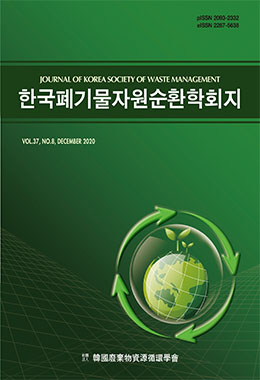At present, the amount of imported and exported waste is increasing every year. The most significant proportion of waste is coal ash, reaching 1,297,094 t/yr as of 2016. Coal ash imports have risen steadily since 2008, most of them coming from Japan., but the treatment cost of coal ash imported from Japan is much higher compared to that of domestic ones.n. In Korea, most of coal ash is used as alternative building materials and auxiliary fuels. Furtehrmore, the National Assembly and private organizations have raised questions about its environmental and human health hazards. This study first analyzed the current export-import status and materials flow of coal ash. Then, we performed a risk assessment for the imported coal ash and cement including imported coal ash. Finally, we proposed a management plan for coal ash according to continuous imports.


